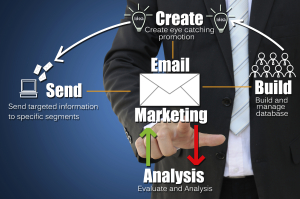
Most marketers are accustomed to the ritual of the A/B test. So much of today’s marketing is driven by data that there’s almost nothing that goes untested. And why wouldn’t you A/B test everything? A lot of marketing technologies these days have A/B test functionality built right into the software. This makes it easy to A/B test most marketing channels, and there are other great A/B test tools out there like Optimizely for the rest.
For most businesses, email is a preferred way to get the news out about what your company is doing. There are all kinds of metrics to measure the success of email marketing, mostly revolving around deliverability and engagement. You can adjust your emails every time you send them out and try to find the perfect recipe, but there are so many variables that it’s difficult to nail down an impeccable email strategy. The best way to find out what works best for your email marketing is with A/B testing. By performing different variations of an A/B test, you can truly perfect your emails and increase the impact they have on your business. There are an abundance of different ways to A/B test emails, but here are some of the ones we like best:
Subject Line
Email subject lines have two primary goals: to inform about the content of your email and to get the recipient to open it. The best subject lines are short and sweet, but very intriguing. Your subject line is strongly correlated with the open rates of your email (percentage of people who open the email and download images). By A/B testing your subject lines, you can find great ways to get more people actually reading your emails instead of just letting it languish in their inbox. Some great ways to test your subject lines are by turning it into a question, using a call to action, turning a positive statement into a negative, or including a promotion.
Call to Action
Calls to action are the part of the email that gets the recipient to take that crucial next step. You have to entice them to download your new eBook or register for your webinar. Getting them to convert by clicking somewhere in your email is a primary goal for marketers. Improving your call to action is a great way to increase the click rates of your emails. The clicks in your email are what wind up driving more sales. Interesting ways to test your email calls to action include: using buttons, changing your link color, link position in the email, and link text.
Sender Address
Who do your email recipients want to be getting emails from? Discovering the answer to that question is a sure way to improve open rates. This is highly dependent on the type of email you are sending, but there is almost always a way to A/B test this. Do your recipients want emails from the VP of marketing or the VP of sales? You can send your emails from your company name or from your CEO. Will an email from the sales rep associated with a customer perform better than an email from a director? These are all excellent ways to test the sender address of your emails.
Plain Text versus HTML
It seems like these days marketers go to extreme lengths to craft visually stunning emails. These emails are created using HTML and can be quite impressive. But do these emails work? It’s always pretty obvious that these come from a massive email blast. Sometimes, a plain text email can better accomplish the goal of that particular email. Plain text emails may not be as impressive looking, but they certainly have a more personal feel to them. It may even be hard to tell if that email came from a large campaign or if it was written solely for you. This A/B test may take a little more effort – the language may need to be different in plan text versus HTML – but the results may shock you.
Time of Day & Day of Week
When you send out your emails can have a huge impact in how people receive them. You can probably come to some easy conclusions about when the best time to email is based off of your personal habits with these types of emails. Even though everyone has their own preferences, there are certainly times when your email will be better received. By A/B testing your email with different times of the day, you can find the optimal time to inform your recipients about an upcoming trade show or a new product. You can also test your emails by day of the week. This gets a little trickier, especially if your email gets regularly shared. If you can pull it off, knowing which day of the week to send your emails can lead to a huge increase in performance.
Images
Everybody likes pictures. Showing your reader what you want them to buy or what they will get by clicking your call to action is an easy way to entice them. Adding images to your email can make it better looking and more engaging. However, not every email necessarily needs images. If the images in your email don’t get opened, this doesn’t count as an open and can lower your email metrics. Figuring out which types of emails should include images is a great way to improve performance for different categories of your emails. You can also use an A/B test to determine the position of an image within your email. Does an email drive more clicks with an image on the top or on the side? Does a large call to action image drive more clicks then a small one? A/B test it to find out.
Measure the Results of Your A/B Tests
An A/B test is only as good as the metrics it provides. You may set up the most amazing A/B test known to man, but if you don’t have a way to measure the results then it becomes worthless. Email marketing platforms should provide you with the capability to A/B test and report on the results. Most marketing automation platforms make it possible to A/B test emails. These technologies are great for giving you digestible metrics on how each of your emails performed in terms of bounces, open rates, click rates, and unsubscribe rates. However, the one thing they can’t tell is who called you as a result of your email.
Email marketing is great for driving calls into your business. This is due to the fact that 88% of people now check emails daily on a mobile device (Return Path Report, May 2012). This has made it easier then ever for email recipients to call you instead of filling out a web form. To truly measure the results of your A/B test, you have to integrate call tracking analytics with your other email metrics. Only with traditional email metrics working in concert with call tracking metrics can you obtain accurate data on the outcomes of your A/B tests. To learn more about the analytics benefits that call tracking provides, check out our Definitive Guide to Call Tracking for Email Marketing.
Digital & Social Articles on Business 2 Community
(320)






